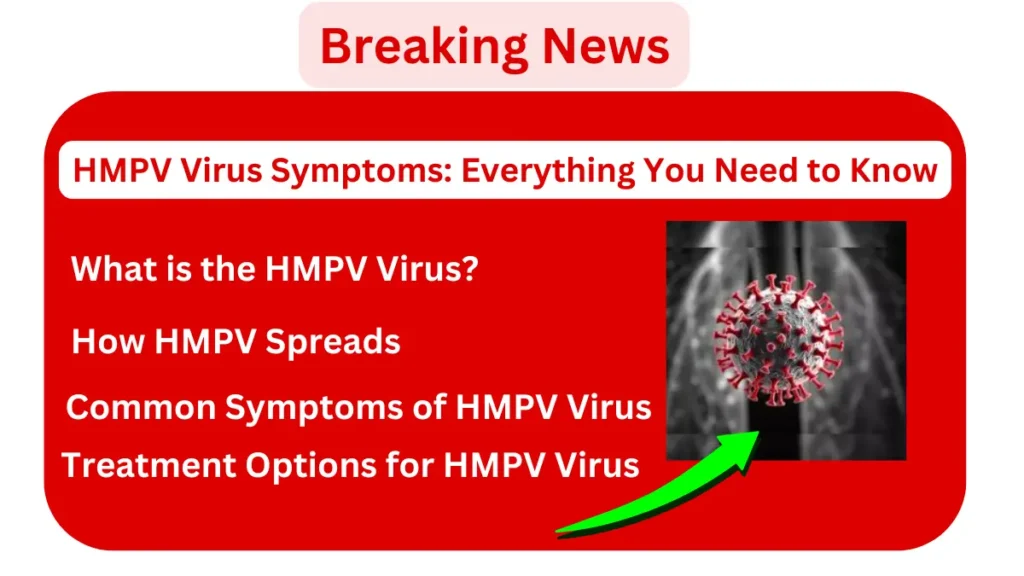Understanding the HMPV Virus

What is the HMPV Virus?
The Human Metapneumovirus (HMPV) is a major respiratory virus that infects the lungs and tracts of human beings. First revealed in 2001, it is an entity in the family Paramyxoviridae and is related closely to respiratory syncytial virus (RSV).
How HMPV Spreads
HMPV spreads through respiratory droplets when an infected person coughs, sneezes, or talks. Surfaces contaminated by these droplets can also transmit the virus if touched, especially when hands contact the mouth, nose, or eyes.
Who is Most at Risk?
HMPV infections can affect anyone, but certain groups are more vulnerable:
- Infants and Young Children: Their developing immune systems make them prime targets for HMPV.
- Elderly Individuals: Age-related immune decline increases susceptibility.
- Immunocompromised Patients: People with weakened immune systems face severe outcomes.
HMPV outbreaks often occur during late winter and spring, similar to flu seasons.
Common Symptoms of HMPV Virus
Respiratory Symptoms
Cough and Congestion: These are often the first signs, as the virus targets the respiratory tract.
Shortness of Breath: Difficulty breathing may occur, especially in severe cases.
Flu-Like Symptoms
Fever and Fatigue: Many individuals experience mild to moderate fever and exhaustion.
Body Aches and Chills: Similar to influenza, these symptoms can make day-to-day activities challenging.
Severe Symptoms to Watch Out For
Pneumonia: When the infection spreads to the lungs, it can lead to pneumonia, causing severe breathing difficulties.
Bronchiolitis in Infants: This life-threatening condition involves inflammation of the small airways in the lungs.
Diagnosis and Detection of HMPV
Clinical Tests for HMPV
PCR Testing: This test detects HMPV’s genetic material, offering precise results.
Antigen Testing: Identifies viral proteins to confirm the infection.
Doctors may also recommend chest X-rays or CT scans in severe cases to assess lung damage.
Treatment Options for HMPV Virus
Symptom Management
Over-the-Counter Remedies: Decongestants and fever reducers can alleviate discomfort.
Hydration and Rest: Staying hydrated and getting ample rest support faster recovery.
When to Seek Medical Help?
Emergency Warning Signs: Persistent high fever, extreme fatigue, or severe shortness of breath warrant immediate attention.
Hospitalization Needs: In severe cases, patients may require oxygen therapy or ventilator support.
Preventing HMPV Infections
Personal Hygiene Practices
Hand Washing and Sanitizers: Regular handwashing or using alcohol-based sanitizers minimizes virus spread.
Proper Respiratory Etiquette: Covering your mouth and nose while sneezing or coughing prevents droplet dispersal.
Community-Level Prevention
Vaccination Prospects: Although no vaccine is available yet, research is ongoing.
Public Health Awareness: Educating communities about prevention can curb outbreaks effectively.
FAQs
- What are the primary symptoms of HMPV?
Common symptoms include cough, congestion, fever, and fatigue. - How is HMPV diagnosed?
Diagnosis involves PCR or antigen testing, often supplemented by clinical evaluation. - Can HMPV lead to severe complications?
Yes, it can cause pneumonia and bronchiolitis, especially in high-risk groups. - Is there a vaccine for HMPV?
Currently, no vaccine exists, but ongoing research shows promise. - What are the best ways to prevent HMPV infection?
Regular handwashing, avoiding contact with infected individuals, and practicing respiratory etiquette are key.
